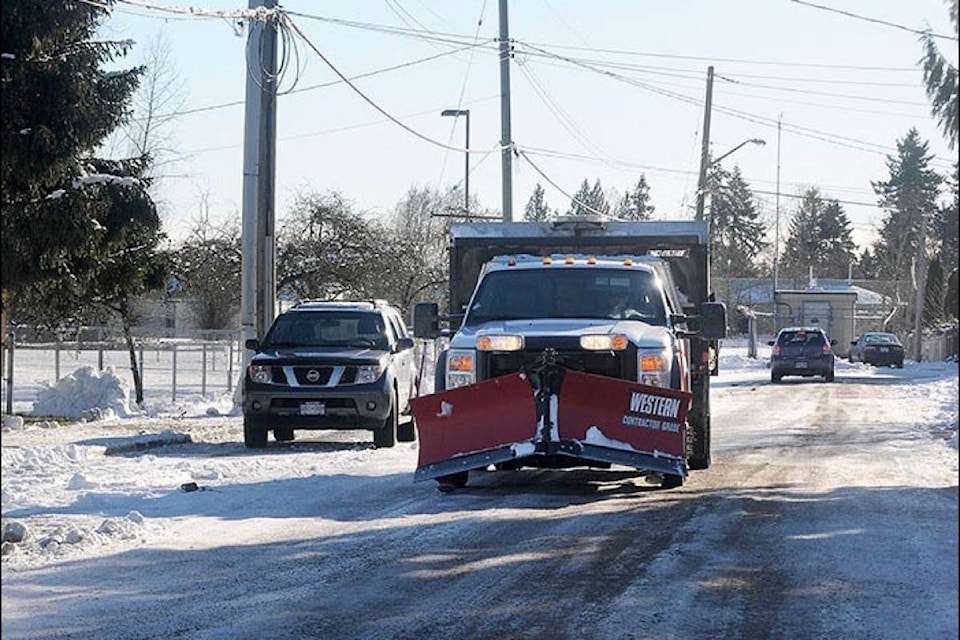Thinking about winter already?
If it’s like last year, you may already be thinking about the types of tires you’ll need to get through another West Coast winter, which could be either warm and wet – or icy and snowy like last year.
The Ministry of Transportation and Infrastructure explains the ins and outs about the four types of tires permitted to use when driving high mountain passes and other B.C. highways requiring winter tires for passenger vehicles.
1. Studded winter tires
How to identify? 3-peaked mountain and snowflake symbol on sidewall and metal studs on tread
Perform best in? Wet, rough ice, and heavy snow; temperatures below 7 C.
Studded tires with studs up to 2 mm are allowed on B.C. highways from Oct. 1 to April 30 (one month after winter tires requirements). Vehicles weighing less than 4,600 kg can have up to 130 studs per tire, and vehicles weighing more can have up to 175 studs per tire.
It’s also important to note that you should use studded tires on all four wheels for optimal control. Legally, you cannot have studded tires only on the front wheels.
2. Non-studded winter tires
How to identify? three-peaked mountain and snowflake on sidewall
Perform best in? Rough ice and soft to hard-packed snow; temperatures below 7 C.
What else should you know? Full winter tires with the mountain/snowflake emblem maintain good traction in winter conditions because they are composed of a rubber compound that stays soft in cold temperatures. They also have an aggressive tread design for added traction on snow and ice.
3. All-weather tires
How to identify? Three-peaked mountain and snowflake on sidewall (ask tire dealer about the differences between winter and all-weather tires)
Perform best in? Milder winter conditions with rain and fast-melting snow; temperatures above and below 7 C.
What else should you know? All-weather tires are the newest type of tire designed to counter winter conditions. What makes them different from standard winter tires is they maintain good handling in both cold and warm temperatures, but can be kept on the vehicle year-round. However, they are made of a compound that is not as soft as standard winter tires, so they do not perform quite as well in cold temperatures. Still, the compound is softer than all-season tires.
4. All-season tires
How to identify? M+S (Mud and Snow) on the sidewall
Perform best in? Milder, dry or slightly wet conditions
What else should you know? All-season tires will not perform as well as standard winter tires in severe conditions; however, all-season tires have a shape and tread design that gives better traction than summer tires in snow and ice. The tire industry indicates M+S tires are made of a hard compound that offers reduced traction when temperatures dip below 7 C, compared to winter tires with the three-peaked mountain and snowflake symbol.
The ministry notes that all of these tires are legal on highways with winter tire requirements between Oct. 1 and March 31, as long as they have a minimum 3.5-mm tread depth.
For maximum stability in cold weather and on ice, snow and slush, it recommends standard winter tires with the mountain/snowflake emblem. On the other hand, if you only drive in a milder area (ie. Lower Mainland) that gets rain rather than snow, you may choose all-weather or all-season tires.
To help explain it all, the ministry has created a website. No matter what type of tire you use, your driving performance is one of the best defences against cold, snow and ice. Give lots of space in poor conditions. Speed limits are for ideal driving conditions – think dry asphalt, warm weather, windows down, wind in hair – so, please slow down when necessary.
